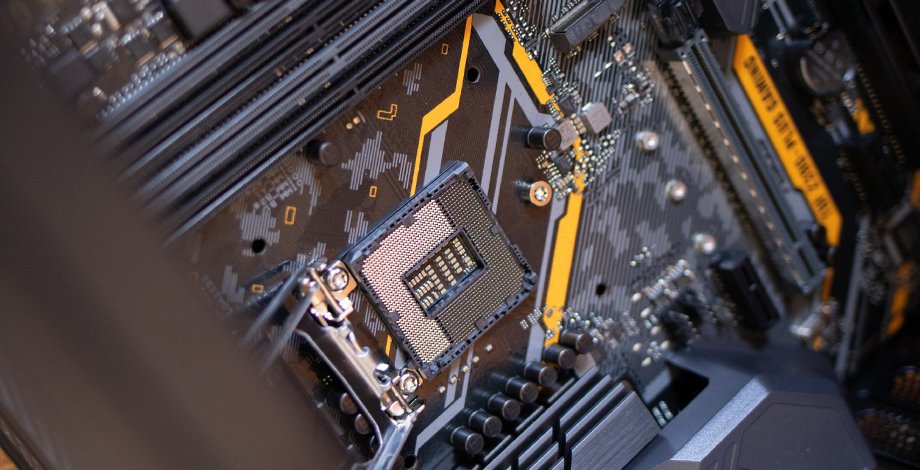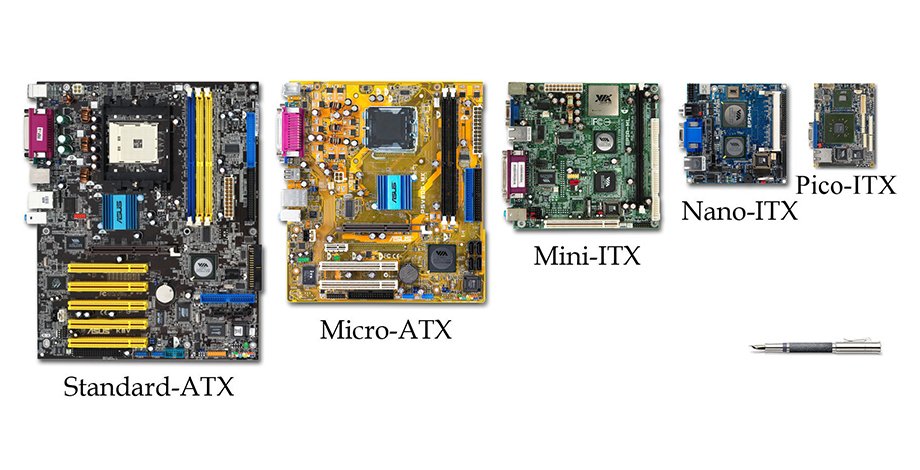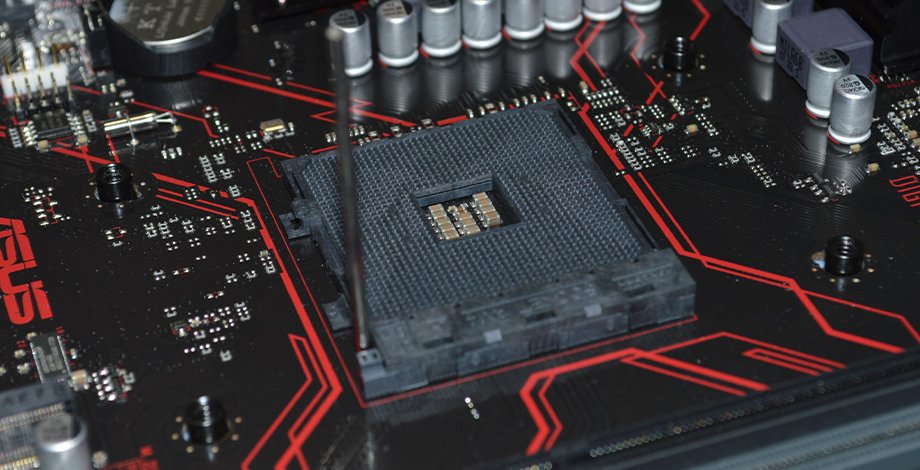Motherboard Form Factors Explained

A motherboard form factor can be used as a guide or specification which determines the size, shape, the number of mounting holes, number and types of ports on the motherboard, and everything else about the motherboard itself. It then ultimately determines the size of the casing and the types of components that follow when building a PC and many other devices as well.
The reason why there are a few different form factors for motherboards, and why they even exist at all, is so that each module can already fit perfectly in existing rackmount systems, cases, and similar. This is so that each new type of motherboard made doesn’t have to search for a special casing just for it.
In any case, let’s dive in deeper and find out everything you need to know about motherboard form factors, how they work, the main types, and more.
What Are Motherboard Form Factors?

We already mentioned a few of the main purposes the motherboard form factor was designed in the first place. However, this technology wasn’t perfect in the beginning, as the AT form factor, which is among the first-ever introduced, had many flaws compared to the most popular ones used today.
As we all probably know, the motherboard is an essential component of any computer. It serves a crucial role in connecting all parts of the computer together, making them work in sync and perform countless operations as a whole.
The form factor is essential even before the motherboard can be created, as it is a guide that manufacturers follow to ensure that everything will fit nicely and work properly. Lastly, the form factor is a crucial feature alongside the motherboard chipset and processor socket type that is used to characterize the motherboard itself.
Main Motherboard Types

Image Source: OC3D.Net
Among the first most commonly used form factors for motherboards was the AT form factor. Not long after, the Baby AT was released and found its way to many computer makers out there. However, even though these form factors got the job done, today there are more advanced and overall better ones that are used universally.
ATX Motherboard Form Factor
ATX stands for Advanced Technology Extended, and it is the single most popular out of all the types of motherboard form factors that are used globally today. Many of the most powerful and best-selling motherboards feature this form factor and it is definitely not without reason.
The ATX motherboard includes dimensions featuring 9.6 x 12 inches. It is the biggest of the following most popular and commonly used form factors you will see on this list. The ATX form factor features various improvements compared to its predecessor, including better airflow, integrated input, and output ports, Start Control by software, reduced hardware cost and energy consumption, less heat, expansion slots without interference, and more.
Micro ATX
The Micro ATX form factor is an evolution of the standard ATX that came out only 1 year later. It features standard measurements of 9.6 x 9.6 inches and it is generally known as a smaller variant of the ATX motherboard form factor, featuring an approximately 25% decrease in size. This is basically the budget version of the ATX.
This one is still compatible with the most common ATX cases but it lacks a few slots and is intended for a smaller power supply. This is still nothing to complain about, as even though most of the best gaming motherboards out there feature an ATX form factor, it is not uncommon at all to see a Micro ATX form factor in many of them.
Mini ATX
In 2005, AOpen designed another evolution to the ATX that was even smaller than the Micro ATX. This motherboard form factor featured many differences from the standard ATX, as it was intended for different devices as well. The Mini ATX includes measurements of only 5.9 x 5.9 inches and it was designed with Mobile on Desktop Technology (MoDT).
This basically means that they adapt mobile CPUs so that there will be less power requirement and less heat generation as well. It also means better application capability, making it an essential motherboard form factor for countless devices out there.
Mini ITX
Moving on, another one of the most popular and commonly used motherboard form factors today is the Mini ITX, which was created by VIA in 2001. This one measures 6.7 x 6.7 inches in size and was originally developed for fan-less cooling systems like home theater systems, set-top boxes, and similar devices where cooling noise could present a distraction. However, such motherboards can still provide enough features to build a strong gaming PC as well.
Nano ITX
The Nano ITX was also developed by VIA Technologies in 2003 but was implemented in late 2005. This motherboard form factor is even smaller than the Mini ITX, standing at a maximum size of 4.7 x 4.7 inches.
These motherboards are fully integrated and feature extremely low power consumption, making them useful for countless devices including set-top boxes, car PCs, digital entertainment devices, thin client devices, and many more.
Pico ITX
Lastly, one of the smallest yet highly applicable motherboard form factors on this list, the Pico ITX. This one is almost half the size of the Nano ITX form factor, standing at a maximum size of 3.9 x 2.8 inches. It originates from VIA Technologies and was published in 2007. Despite its size, the Pico ITX finds countless possibilities in industrial automation devices, vehicle computers, and more.
Does Motherboard Form Factor Matter?

From what we’ve seen so far, it’s safe to conclude that the form factor of the motherboard is essential and needs to always be taken into account. It’s essential in terms of compatibility and making sure the device it is intended for works perfectly and without any issues. However, if you’re a consumer who is buying a pre-built PC or anything similar, then worrying about the form factor of the motherboard isn’t something you should focus on.
On the other hand, if you yourself are building your own PC, you must make sure that all the parts fit, and the form factor of the motherboard is the first thing you must consider before choosing the other components like GPU, CPU, RAM, and even the case. Basically, the motherboard form factor will decide what type of PC you build and what types of components it will include.